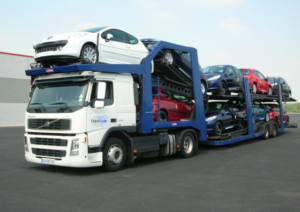Category Archives: Shipping Cars
How to Crate Your Motorcycle for Shipping
Are you planning to ship your motorcycle? Then you need to make sure it’s crated properly before shipping it out. Motorcycle crating is a process that ensures the safety of your bike during transport. It involves building a sturdy crate that will protect your bike from damage during handling and transportation Shipping Cars.
In this blog, we will discuss the importance of crating a motorcycle, how to prepare your motorcycle for crating, materials required for building a motorcycle crate, step-by-step guide to building a motorcycle crate, and factors that influence the total cost of crating.
Additionally, we will also discuss how professionals can help ease the process of crating and provide insights into buying a crate from experts. Read on to ensure that your beloved motorcycle reaches its destination safe and sound.
Understanding the Importance of Crating a Motorcycle
The Purpose of Motorcycle Crating
Motorcycle crating serves an important purpose in shipping. By providing a secure enclosure, crates ensure that your motorcycle stays safe during transit. They prevent the bike from shifting or moving around, reducing the risk of damage.
Crating also acts as a protective barrier against external elements like dirt and moisture, keeping your bike in pristine condition. Additionally, crates help in preserving the integrity of your motorcycle by ensuring that no parts or accessories are lost during transportation.
They act as a shield, guarding against potential scratches or dents that could occur during handling. Remember, the next time you need to ship your motorcycle, consider crating it for added protection.
Benefits of Crating Your Motorcycle for Shipping
Crating your motorcycle for shipping offers several benefits. Firstly, it minimizes the risk of damage during handling and transport, ensuring that your prized possession arrives at its destination in the same condition it was packed.
Additionally, a properly crated motorcycle allows for easier loading and unloading onto trucks or containers, saving time and effort. Moreover, a well-crated motorcycle is less likely to encounter delays or complications in transit, providing a smoother shipping experience.
Furthermore, crating enhances the professionalism and safety of the shipping process, giving you peace of mind knowing that your motorcycle is well-protected. So, when it comes to shipping your motorcycle, considering the benefits of crating is essential Shipping Cars.
Preparing Your Motorcycle for Crating
Before crating your motorcycle for shipping, it is important to take a few necessary steps to ensure its safe transportation. Begin by thoroughly cleaning your motorcycle to avoid any dirt contamination during transit.
Remove any loose or detachable parts to prevent damage during handling. It is also essential to drain fluids such as oil or fuel to prevent leaks. Taking detailed photographs of your motorcycle before crating it will serve as documentation for any potential damage claims.
Lastly, securely pack and protect any removed parts or accessories to prevent loss or damage. By following these steps, you can ensure that your motorcycle is prepared for crating and ready for safe shipping.
Tips for Safe and Effective Preparation
To ensure safe and effective preparation for crating your motorcycle, there are a few key tips to keep in mind.
- First, use protective covers or blankets to shield vulnerable parts from scratches during the shipping process.
- Additionally, it’s important to keep all removed parts organized and labeled for easy reassembly once your motorcycle reaches its destination. To prevent any electrical issues, consider disconnecting the battery before shipping.
- It’s also advisable to follow manufacturer recommendations for securing the handlebars and mirrors, as this will help prevent any potential damage during transit.
- Finally, double-check that all fasteners are tightened to prevent vibrations while your motorcycle is being shipped.
Materials Required for Building a Motorcycle Crate
To construct a sturdy motorcycle crate, you’ll need a few essential materials. Plywood is a popular choice due to its durability and strength.
- Additionally, you’ll require screws, nails, and wood glue for secure assembly. To protect your motorcycle during shipping, foam padding or packing material should be used.
- It’s important to ensure that the motorcycle remains in place within the crate, for which strapping or tie-downs are necessary.
- Lastly, labels or stickers can be applied to identify the contents of the crate. By gathering these materials, you’ll be well-prepared to build a reliable and protective motorcycle crate.
Essential Tools for Crate Construction
To construct a sturdy and secure crate for shipping your motorcycle, you will need a few essential tools.
- A hammer is necessary for driving in nails or securing screws, ensuring that the crate remains stable during transportation.
- A saw or jigsaw is needed to cut the plywood to the desired dimensions, allowing you to create a custom-sized shipping crate.
- Measuring tools like a tape measure or ruler ensure accurate cuts, resulting in a precise fit for your motorcycle.
- Additionally, clamps or vices can be used to hold the pieces together during assembly, providing extra stability.
- Lastly, sandpaper or a sander will help smooth any rough edges, preventing potential damage to your motorcycle during transit.
Step-by-Step Guide to Building a Motorcycle Crate
- To begin constructing a motorcycle crate, measure and mark the dimensions on a piece of plywood. Cut the plywood according to the marked measurements Shipping Cars.
- Assemble the base and sides of the crate using screws or nails.
- For added protection, attach foam padding or packing material inside the crate. To finalize the crate, securely fasten the top to complete the enclosure.
- Add handles or grips for easier lifting and handling.
- Attach labels indicating the shipping address and handling instructions.
- Inspect the crate for any sharp edges or protrusions.
- Once finished, the crate is ready for motorcycle loading and shipment.
How to Begin the Crate Construction?
- To begin the construction of a motorcycle crate, gather all the necessary materials such as plywood, screws, nails, and foam padding.
- Measure your motorcycle’s dimensions to ensure the crate is the right size.
- Cut the plywood into panels for the crate’s sides, top, and bottom.
- Assemble the panels using screws or nails.
- Line the interior with foam padding to protect your motorcycle during shipping.
Finalizing the Crate: What’s Next?
- After constructing your motorcycle crate, there are a few important steps to take before shipping. Firstly, double-check that all the screws and bolts are tight and secure.
- Then, reinforce any weak points in the crate to ensure maximum protection during transit.
- Finally, label the crate with clear instructions and contact information for easy identification.
How Can Professional Help Ease the Process of Crating?
Professionals play a crucial role in easing the process of crating your motorcycle for shipping Shipping Cars.
They offer guidance in selecting the right crate, provide quality crates that meet shipping industry standards, handle logistics, and ensure secure packaging to prevent damage.
Additionally, they navigate legal requirements and regulations with their expertise.
Buying a Crate From a Professional
When it comes to buying a crate for shipping your motorcycle, turning to professionals is a wise choice. Professionals offer a range of crates, including standard sizes and custom-made options. These crates are made of durable materials such as plywood or shipping containers, ensuring the safety of your motorcycle during transit.
By purchasing from a professional, you can be confident that the crate meets industry standards for shipping motorcycles.
Additionally, professionals can provide guidance on choosing the appropriate crate size for your motorcycle, saving you the time and effort of sourcing and assembling a crate yourself. Trusting the expertise of professionals will simplify the process and give you peace of mind Shipping Cars.
How much do professional crates cost?
The cost of professional crates can vary depending on their size and type. Plywood crates typically range from $100 to $500, while shipping containers, which offer more protection, can cost between $500 and $2000.
Factors like additional features may also influence the cost. To find the best price and service, it’s recommended to request quotes from different professionals.










